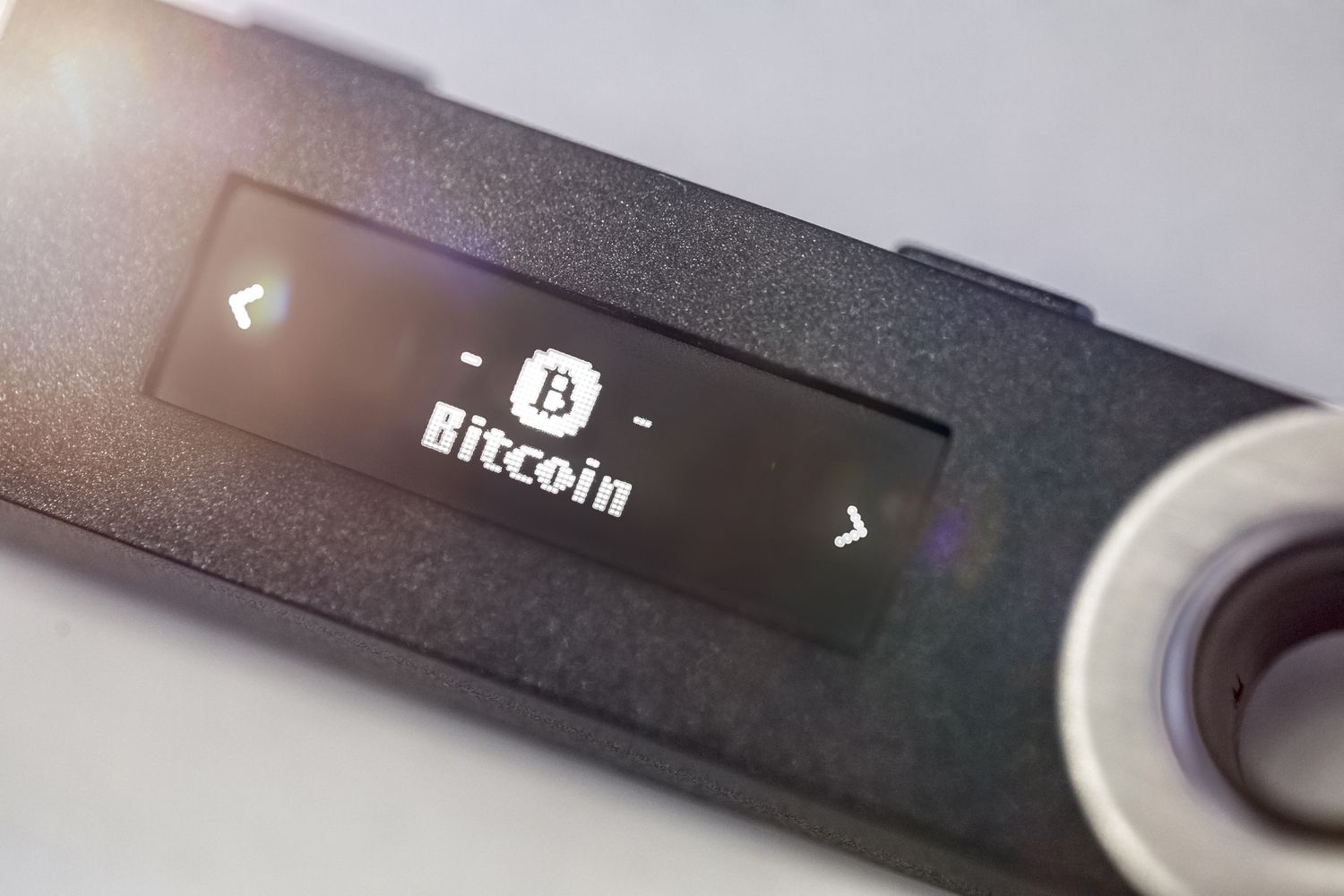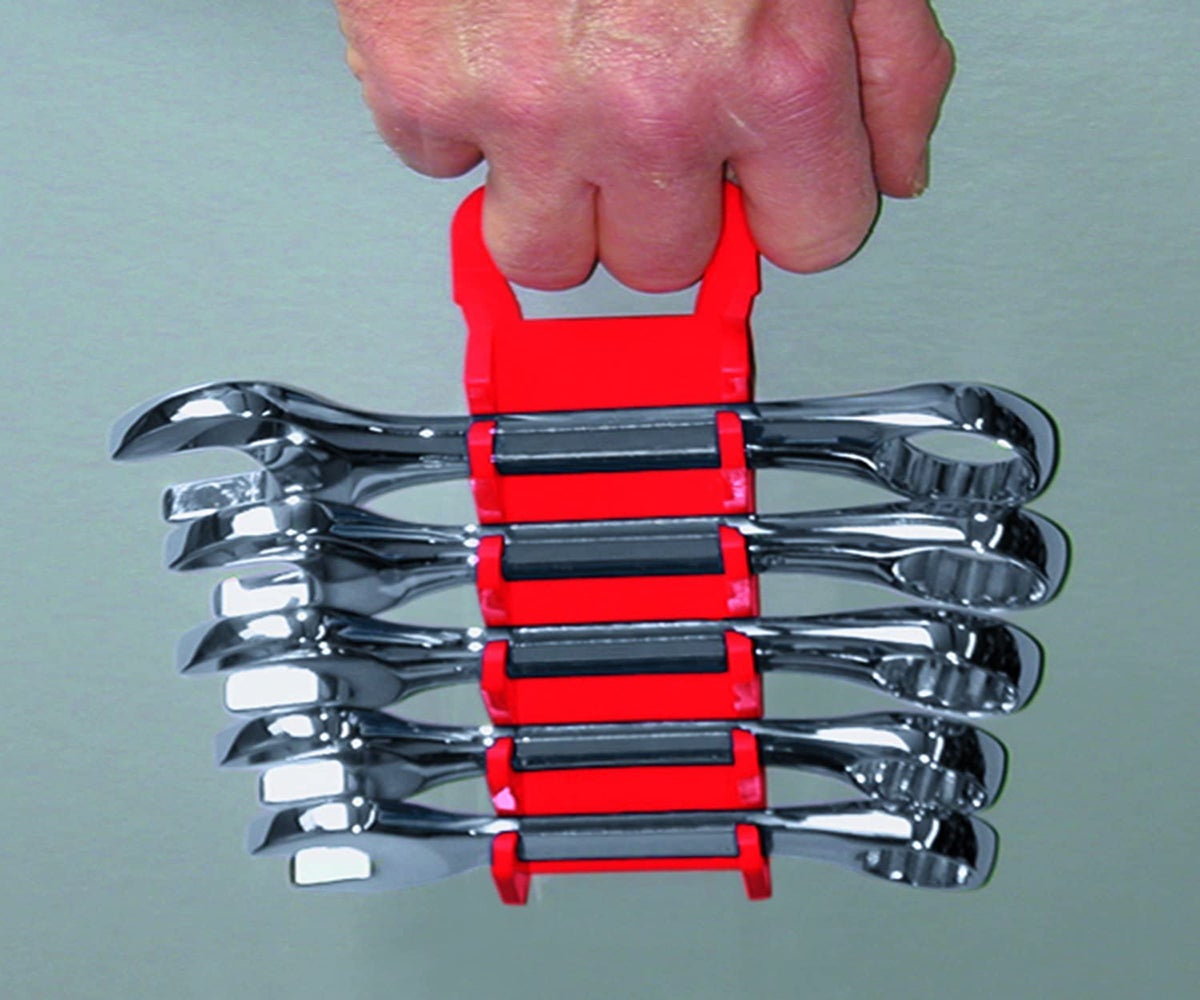

Articles
How To Store Crypto
Modified: August 17, 2024
Learn how to store crypto securely with our informative articles. Discover best practices and strategies to keep your digital assets safe.
(Many of the links in this article redirect to a specific reviewed product. Your purchase of these products through affiliate links helps to generate commission for Storables.com, at no extra cost. Learn more)
Introduction
Cryptocurrency has become an increasingly popular form of digital currency, offering individuals a decentralized and secure way to conduct transactions online. With the rise in popularity, it is crucial for cryptocurrency holders to understand the importance of proper storage to safeguard their digital assets.
Storing crypto involves keeping your private keys, which are like your passwords, in a secure and accessible manner. Failure to store your crypto properly can lead to irreversible loss or theft of your digital assets. This article will provide you with valuable insights on the different types of crypto wallets and best practices for storing your cryptocurrency securely.
By implementing the strategies outlined in this article, you can protect your digital assets from hacking attempts, phishing scams, and other potential risks.
Key Takeaways:
- Safeguard your cryptocurrency by implementing secure storage practices such as regular backups, strong passwords, encryption, and offline storage. Stay informed and adapt to evolving security measures to protect your digital assets.
- Choose the right type of crypto wallet, whether hardware, software, paper, or online, and follow best practices such as 2FA and cold storage to ensure the security and accessibility of your cryptocurrency holdings. Stay proactive in safeguarding your digital assets.
Read more: How To Store Crypto In Cold Storage
Importance of Proper Crypto Storage
The importance of proper crypto storage cannot be overstated. Cryptocurrency transactions are irreversible and anonymous, meaning that once your digital assets are lost or stolen, there is little to no recourse to recover them. Therefore, taking the necessary precautions to secure your cryptocurrency is crucial.
One of the primary risks associated with crypto storage is hacking. Cybercriminals are constantly evolving their tactics to gain unauthorized access to individuals’ crypto wallets. They employ various techniques, including phishing attacks, malware, and social engineering, to trick users into revealing their private keys.
Another risk is the potential loss of private keys. If you lose access to your private keys, you may permanently lose your cryptocurrency. This can happen if you forget your password or if your storage device becomes damaged or lost.
In addition to security risks, proper crypto storage also offers convenience and accessibility. When your digital assets are stored securely, you can easily access and manage them whenever you need to. This is particularly important for individuals who actively trade and use their cryptocurrencies for daily transactions.
By understanding the importance of proper crypto storage, you can take the necessary steps to protect your digital assets and minimize the risks associated with holding cryptocurrency.
Types of Crypto Wallets
When it comes to storing your cryptocurrency, there are several types of wallets available to choose from. Each type offers different levels of security and convenience. Here are the most common types of crypto wallets:
1. Hardware Wallets
Hardware wallets are physical devices designed to securely store your private keys offline. They are considered to be one of the most secure forms of crypto storage. Hardware wallets generate and store your private keys offline, protecting them from potential online threats.
These wallets typically come in the form of a USB device and require a physical connection to a computer or smartphone to access the funds. This ensures that your private keys are never exposed to the internet, reducing the risk of hacking or malware attacks. Popular hardware wallet brands include Ledger and Trezor.
2. Software Wallets
Software wallets, also known as desktop or mobile wallets, are applications that you install on your computer or smartphone. These wallets store your private keys digitally and can be accessed via the internet. Software wallets provide a convenient way to manage your cryptocurrency and make transactions.
While software wallets are generally secure, they are more vulnerable to hacking and malware compared to hardware wallets. However, by following security best practices such as using strong passwords and keeping your devices up to date, you can minimize the risks associated with software wallets. Some popular software wallet options include Exodus, Electrum, and Coinbase Wallet.
Read more: How To Store Store-Bought Bread
3. Paper Wallets
Paper wallets are physical copies of your private and public keys. They are usually printed out or written down on paper and stored in a secure location. Paper wallets are completely offline and do not rely on any digital devices or internet connectivity to store or access your cryptocurrency.
To create a paper wallet, you can use online generators that generate a pair of QR codes containing your private and public keys. You can then print out the QR codes and keep them in a safe place. One of the benefits of paper wallets is that they are not susceptible to hacking or malware attacks. However, they can be easily lost, damaged, or stolen, so it’s essential to take proper precautions when storing them.
4. Online Wallets
Online wallets, also known as web wallets, are crypto wallets that are accessible through a web browser. They are hosted by a third party and store your private keys on their servers. Online wallets offer convenience as you can access them from any device with an internet connection.
However, online wallets are considered to be the least secure option as they rely on the trustworthiness of the wallet provider. If the provider’s servers are compromised, your private keys and funds could be at risk. It is crucial to choose reputable online wallet providers and implement additional security measures, such as two-factor authentication (2FA), to protect your assets. Some popular online wallet options include MyEtherWallet and MetaMask.
Each type of wallet has its own advantages and disadvantages, so it’s important to choose the one that aligns with your needs and risk tolerance. Regardless of the type of wallet you choose, following best practices for crypto storage is crucial to ensure the security of your digital assets.
Hardware Wallets
Definition and Benefits
Hardware wallets are physical devices designed to securely store your private keys offline. They provide an extra layer of security by keeping your keys isolated from potential online threats. The private keys are generated and stored within the hardware wallet itself, ensuring that they never touch the internet or your computer’s operating system.
One of the main benefits of hardware wallets is their resistance to hacking attempts. Since the private keys never leave the device, they are protected from malware and keyloggers that may be present on your computer or smartphone. This makes hardware wallets one of the most secure ways to store and manage your cryptocurrency.
In addition to enhanced security, hardware wallets also offer convenience and ease of use. They often come with built-in screens and buttons, allowing you to verify and authorize transactions directly on the device itself. This eliminates the need for relying on potentially untrustworthy computer screens or mobile interfaces.
Read more: How To Store Basil From Grocery Store
Examples of Popular Hardware Wallets
There are several reputable hardware wallet brands available in the market. Here are a few examples:
- Ledger: Ledger is a well-known and trusted brand in the hardware wallet industry. They offer a range of products, including the Ledger Nano S and the Ledger Nano X. These wallets support a wide range of cryptocurrencies and have a user-friendly interface.
- Trezor: Trezor is another popular hardware wallet brand that prioritizes security and user experience. Their flagship products, the Trezor One and Trezor Model T, offer features such as a built-in display, passphrase protection, and support for multiple cryptocurrencies.
- KeepKey: KeepKey is a hardware wallet that focuses on simplicity and security. It has a large display for enhanced visibility and supports over 40 cryptocurrencies. KeepKey is known for its sleek design and user-friendly interface.
These hardware wallets come with their own software applications that allow you to manage your cryptocurrency holdings easily. They also provide firmware updates to ensure that you have the latest security features and bug fixes.
When choosing a hardware wallet, it is important to purchase from reputable sources and verify the authenticity of the device to prevent any potential tampering or counterfeit products.
Overall, hardware wallets offer a combination of security and convenience, making them an excellent choice for long-term storage of your cryptocurrency.
Software Wallets
Definition and Benefits
Software wallets, also known as desktop or mobile wallets, are applications that you install on your computer or smartphone to store and manage your cryptocurrency. These wallets allow you to access your funds conveniently and make transactions directly from your device.
One of the primary benefits of software wallets is their accessibility. You can easily install these wallets on your preferred device and carry them with you wherever you go. Software wallets also offer a user-friendly interface, making it easy for both beginners and experienced users to navigate and manage their crypto holdings.
Software wallets also provide flexibility as they support multiple cryptocurrencies. Whether you’re holding Bitcoin, Ethereum, or any other popular cryptocurrencies, you can find a software wallet that is compatible with your digital assets.
Examples of Popular Software Wallets
There are numerous software wallet options available, each with its own unique features and design. Here are a few examples of popular software wallets:
- Exodus: Exodus is a user-friendly software wallet that supports multiple cryptocurrencies. It offers a beautiful and intuitive interface, making it easy for beginners to manage their crypto assets. Exodus also provides a built-in exchange feature, allowing users to swap cryptocurrencies within the wallet.
- Electrum: Electrum is a lightweight software wallet known for its ease of use and strong security. It has been around for several years and is one of the oldest and most trusted Bitcoin wallets available. Electrum offers advanced features such as support for hardware wallets and multi-signature wallets.
- Coinbase Wallet: Coinbase Wallet is a mobile wallet provided by the popular cryptocurrency exchange, Coinbase. It is available for both iOS and Android devices and supports a wide range of cryptocurrencies. Coinbase Wallet offers added security features such as biometric authentication and the ability to connect to decentralized applications.
These software wallets are regularly updated to address any security vulnerabilities and improve performance. It’s important to note that software wallets rely on the security of the device and operating system they are installed on. Therefore, it’s crucial to keep your devices and software up to date to ensure the best level of security.
Remember to research and choose a reputable software wallet provider and exercise caution when downloading and installing wallet applications to protect your funds from potential phishing or malware attacks.
Overall, software wallets provide a convenient and accessible way to manage your cryptocurrency holdings while offering a range of features to suit your needs.
Read more: How To Store Yearbooks
Paper Wallets
Definition and Benefits
Paper wallets are a form of offline cryptocurrency storage where your private and public keys are printed or written down on a physical piece of paper. They are considered to be a highly secure method of storing your cryptocurrency because they are completely offline and not vulnerable to hacking or malware attacks.
One of the main benefits of paper wallets is that they provide a high level of control over your private keys. Since the keys are generated and stored offline, you have sole access and ownership of your funds. Paper wallets also offer an added layer of anonymity as they do not require any personal information to be linked to the wallet.
Another advantage of paper wallets is their durability. Unlike hardware wallets or digital storage devices, paper wallets are not subject to technical failures or physical damages. As long as you keep the paper wallet in a secure place, it can last for an extended period of time.
Steps to Create a Paper Wallet
Creating a paper wallet involves the following steps:
- Generate a random key pair: Use a trusted paper wallet generator or an open-source program to create a random private and public key pair. Ensure that the generator you use is reputable and secure.
- Print or write down the keys: Once the key pair is generated, you can either print it out or write it down on a piece of paper. It is recommended to use a printer that is not connected to the internet to minimize the risk of exposure.
- Securely store the paper wallet: Store your paper wallet in a secure, tamper-proof location such as a safe or a vault. Be cautious about keeping multiple backups and ensure that they are stored in separate secure locations.
- Optional: Encrypt the paper wallet: For an added layer of security, you can consider encrypting the private key with a password or passphrase. This provides an extra barrier against unauthorized access should someone gain physical access to the paper wallet.
- Fund and use the paper wallet: To send or receive cryptocurrency using the paper wallet, you can either scan the QR code or manually enter the public key into a software or online wallet compatible with the cryptocurrency.
Remember to keep your paper wallet offline and avoid exposing it to potential threats, such as taking pictures or sharing it online. Also, be mindful of the risks associated with physical vulnerabilities, such as loss or damage to the paper.
While paper wallets offer a high level of security, they require careful handling and protection to ensure the safety of your cryptocurrency. Regularly audit and update your paper wallet to ensure that it is still intact and has not been compromised.
Overall, paper wallets provide an excellent offline storage option for long-term holding of cryptocurrency, ensuring complete control and security over your funds.
Online Wallets
Read more: How To Store Cucumber
Definition and Risks
Online wallets, also known as web wallets, are crypto wallets that are accessed through a web browser. These wallets are hosted by third-party providers, who handle the storage and security of your private keys on their servers. Online wallets offer convenience and accessibility as you can access your funds from any device with an internet connection.
However, there are risks associated with using online wallets. One major risk is the reliance on the wallet provider’s security measures. As your private keys are stored on the provider’s servers, an attack on their infrastructure could potentially compromise your keys and lead to the loss or theft of your funds.
Another risk with online wallets is the potential for phishing attacks or fake wallet websites. Scammers may create fraudulent online wallets that mimic legitimate ones to trick users into revealing their private keys. It is essential to thoroughly research and verify the authenticity and reputation of any online wallet provider before using their services.
Factors to Consider before Using an Online Wallet
Before using an online wallet, consider the following factors to ensure the security of your funds:
- Reputation and Trustworthiness: Research the online wallet provider and look for reputable and well-established companies with a track record of security and customer satisfaction. Read reviews and check for any reported security incidents or breaches.
- Security Features: Assess the security measures implemented by the wallet provider. Look for features such as two-factor authentication (2FA), encryption, and frequent security audits. These features add an extra layer of protection to your funds.
- Control over Private Keys: Understand the level of control you have over your private keys. Ideally, the wallet provider should offer options for users to have sole control over their keys, such as through a recovery phrase or built-in key management.
- Backup and Recovery: Determine the backup and recovery procedures of the online wallet. Ensure that there are mechanisms in place for securely backing up and restoring your wallet in case of device loss, theft, or failure.
- Customer Support: Consider the level and responsiveness of customer support provided by the wallet provider. Prompt support in case of issues or concerns can be crucial in safeguarding your funds.
Additionally, it is important to always practice good security habits when using online wallets. This includes using strong, unique passwords, regularly updating software and firmware, and being cautious of phishing attempts and suspicious links.
While online wallets offer convenience and ease of use, it is crucial to weigh the risks and take appropriate precautions to ensure the safety of your cryptocurrency holdings.
Best Practices for Storing Crypto
Ensuring the security of your cryptocurrency holdings is of utmost importance. By following best practices for storing crypto, you can minimize the risks of loss or theft of your digital assets. Here are some key best practices to consider:
1. Secure Backup Procedures
Regularly backing up your crypto wallet is essential in case of device failure or loss of access. Backup your wallet to an offline storage medium, such as a USB drive or external hard drive, and store it in a secure location. Keep multiple copies in separate physical locations for added redundancy. Additionally, regularly check the integrity of your backups to ensure they can be restored if needed.
Read more: How To Store A Couch
2. Strong Passwords and Encryption
Create strong, unique passwords for your crypto wallets and accounts. Use a combination of uppercase and lowercase letters, numbers, and special characters. Avoid common words or easily guessable information. Enable encryption features, if available, to add an extra layer of protection to your wallet and private keys.
3. Two-Factor Authentication (2FA)
Implement two-factor authentication for your crypto wallets whenever possible. 2FA adds an additional layer of security by requiring a second form of verification, such as a temporary code or biometric authentication, in addition to your password. This helps protect against unauthorized access, even if your password is compromised.
4. Offline Storage and Cold Wallets
Consider storing a portion of your cryptocurrency offline in what is known as a cold wallet. Cold wallets are not connected to the internet, making them highly resistant to hacking attempts. Options for cold wallets include hardware wallets and paper wallets. By keeping your crypto offline, you mitigate the risk of online threats and vulnerabilities.
5. Regular Software Updates
Keep your wallet software and any associated applications up to date with the latest security patches and bug fixes. Regular updates often include security enhancements to protect against newly identified vulnerabilities.
Read more: How To Store A Banana
6. Secure Network and Computer Practices
When accessing your crypto wallet, ensure you are using a secure and private network. Avoid using public Wi-Fi networks or untrusted devices. Keep your computer or smartphone software up to date and use reputable antivirus and anti-malware software to protect against potential threats.
7. Stay Informed and Educated
Stay updated with the latest news and developments in the crypto world to remain informed about emerging threats and best practices. Join reputable cryptocurrency communities and follow trusted sources for insights and security recommendations.
By following these best practices, you can significantly enhance the security of your cryptocurrency storage and reduce the likelihood of loss or theft. Remember, cryptocurrency security is an ongoing effort, so stay vigilant and regularly review and update your security measures.
Secure Backup Procedures
Importance of Regular Backups
Regularly backing up your crypto wallet is a crucial practice to protect against the risk of losing access to your digital assets. The loss or damage of your device or the compromise of your private keys can result in permanent loss of your cryptocurrencies. By maintaining secure backup procedures, you can ensure that your crypto holdings remain recoverable even in the event of unexpected incidents.
Backups are particularly important when using software wallets or online wallets, as they rely on the security and integrity of your device and the wallet provider’s servers. By creating and maintaining secure backups, you can mitigate the risk of losing funds due to hardware failures, software glitches, or security breaches.
Read more: How To Store Shortening
Methods for Securing Wallet Backups
Here are some methods for securing wallet backups:
1. Physical Backup:
Create a physical backup by storing your wallet’s private keys on an offline storage medium. This can be a USB flash drive, an external hard drive, or even a paper printout of your private keys (in the case of a paper wallet).
Keep your physical backups in a secure location, away from potential damage or theft. Consider using a fireproof and waterproof safe or a safety deposit box at a trusted financial institution.
2. Encrypted Backup:
Encrypting your wallet backup adds an extra layer of security. Before storing the backup on any storage medium, encrypt it using strong encryption algorithms and a unique passphrase that is not easily guessable.
Ensure that you remember the passphrase and keep it separate from the backup itself. This way, even if someone gains access to your backup, they won’t be able to decrypt it without the passphrase.
3. Cloud Storage:
While cloud storage can be convenient, it is crucial to ensure that it is properly secured. Use an encrypted cloud storage service that ensures the privacy and integrity of your wallet backup files.
Before uploading the backup to the cloud, encrypt it with your own encryption tools or software. This way, even if there is a breach in the cloud storage provider’s security, your encrypted wallet backup remains protected.
4. Multiple Locations:
Consider creating and storing multiple backups in different physical locations. This provides redundancy and reduces the risk of losing your funds in case of theft, natural disasters, or other unforeseen events.
However, ensure that each backup is stored securely, and only trusted individuals have access to the backup locations to prevent unauthorized access.
Remember to regularly update your backups whenever you make significant changes to your wallet, such as adding new addresses or receiving large amounts of cryptocurrency.
By implementing these secure backup procedures, you can safeguard your wallet and have peace of mind knowing that your crypto holdings are protected against potential loss or damage.
Strong Passwords and Encryption
Rules for Creating Strong Passwords
Using strong passwords is essential for securing your crypto wallets and protecting your digital assets from unauthorized access. Here are some rules to follow when creating strong passwords:
1. Length:
Choose a password that is at least 12 characters long. The longer the password, the harder it is for attackers to guess or crack it.
2. Complexity:
Include a mix of uppercase and lowercase letters, numbers, and special characters in your password. Avoid using common words or easily guessable information such as your name, birthdate, or pet’s name.
3. Avoid Personal Information:
Avoid using personal information that can be easily obtained or guessed by others. This includes your address, phone number, or any publicly available information about yourself.
4. Unique Passwords:
Use a unique password for each of your crypto wallets and accounts. Reusing passwords increases the risk of multiple accounts being compromised if one password is exposed.
5. Password Managers:
Consider using a password manager to generate and securely store passwords for your crypto wallets. Password managers can create long and complex passwords for you, and you only need to remember a single master password to access them.
Encryption Techniques for Wallets
In addition to using strong passwords, encryption adds an extra layer of security to your crypto wallets. Here are some encryption techniques commonly used to protect wallets:
1. Symmetric Encryption:
Symmetric encryption uses the same secret key to encrypt and decrypt data. Before storing your wallet on a device or in a file, encrypt it using a strong symmetric encryption algorithm such as AES (Advanced Encryption Standard).
2. Asymmetric Encryption:
Asymmetric encryption, also known as public-key encryption, uses a pair of keys: a public key to encrypt the data and a private key to decrypt it. Many software and hardware wallets utilize asymmetric encryption to protect the communication between the wallet and the network.
3. Password-Based Encryption:
Password-based encryption uses your password or passphrase to derive an encryption key. This technique ensures that your wallet’s private keys are encrypted and decrypted only when the correct password is provided.
4. Hardware-Backed Encryption:
Modern hardware wallets often have built-in hardware-backed encryption to protect your private keys. This encryption is processed within the secure hardware element of the wallet, making it resistant to attacks.
Remember to keep your passwords and encryption keys secure and separate from your wallet backups. Avoid sharing them with anyone and consider periodically updating your passwords and encryption algorithms to stay one step ahead of potential attackers.
By following these best practices for creating strong passwords and implementing encryption techniques, you can significantly enhance the security of your crypto wallets and protect your digital assets from unauthorized access.
Read more: How To Store Arrows
Two-Factor Authentication (2FA)
Explanation of 2FA
Two-Factor Authentication (2FA) is an additional layer of security that adds another step to the authentication process when accessing your crypto wallets. It requires you to provide two forms of verification, typically something you know (such as a password) and something you have (such as a temporary code or a physical device).
With 2FA enabled, even if an attacker obtains your password, they would still need the second factor (e.g., a generated code or physical device) to gain access to your crypto wallet. This provides an extra layer of protection against unauthorized access and helps to prevent potential hacks or breaches.
Implementing 2FA for Crypto Wallets
Implementing 2FA for your crypto wallets is relatively straightforward and can significantly enhance the security of your digital assets. Here’s how you can set up 2FA for your crypto wallet:
1. Choose a 2FA Method:
Select a 2FA method that suits your preferences and the options provided by your wallet. Common methods include SMS-based authentication, authenticator apps (such as Google Authenticator or Authy), and hardware tokens.
2. Enable 2FA in Your Wallet:
Access the security settings of your crypto wallet and locate the 2FA or two-step verification option. Follow the provided instructions to enable 2FA for your wallet.
3. Set Up the 2FA Method:
If you choose SMS-based authentication, enter your mobile phone number and wait to receive a verification code. Enter the code into the wallet to complete the setup.
If you opt for an authenticator app, install the chosen app on your smartphone, scan the provided QR code in your wallet’s settings, and the app will generate a unique code. Enter the code into the wallet to verify the setup. Remember to securely back up the QR code or secret key used to set up the authenticator app.
4. Test the 2FA:
Once set up, test the 2FA by logging out of your wallet and attempting to log back in. The wallet will prompt you to enter the verification code provided by your chosen 2FA method.
5. Keep Backup for Recovery:
It’s vital to keep a backup solution or recovery option for your 2FA setup in case you lose your device or are unable to access your chosen 2FA method. This could involve printing recovery codes or securely storing backup keys associated with your 2FA method.
By implementing 2FA, you enhance the security of your crypto wallets, ensuring that even if your password is compromised, an additional layer of authentication is required to access your digital assets. It is important to remember to securely store your recovery options and regularly review the security settings of your wallets for any updates or changes.
Offline Storage and Cold Wallets
Read more: How To Store A Hose
Benefits of Offline and Cold Wallet Storage
Offline storage, often referred to as cold wallet storage, is a method of storing cryptocurrency that keeps the private keys completely offline and disconnected from the internet. This approach offers several benefits in terms of security and protection against potential threats.
One of the primary benefits of offline storage is that it significantly reduces the risk of hacking or online attacks. Since the private keys are stored offline, they are inaccessible to potential attackers on the internet. Even if your computer or device is compromised, the offline private keys remain securely stored.
Cold wallets, which are a type of offline storage, provide an additional layer of security. These wallets are not just offline but dedicated solely to storing cryptocurrency. Cold wallets are usually hardware devices specifically designed for secure crypto storage, offering hardened security and isolation to protect your private keys.
By utilizing offline storage and cold wallets, you can protect your digital assets from malware, phishing attacks, and other online threats, offering you greater peace of mind knowing your cryptocurrency is safe.
Techniques for Cold Wallet Storage
Here are a few techniques for effectively storing cryptocurrency in cold wallets:
1. Hardware Wallets:
Hardware wallets offer one of the most secure methods of cold wallet storage. These physical devices store your private keys in an offline environment and feature robust security measures. Hardware wallets have built-in chips that ensure the isolation and secure generation of private keys, providing protection even on compromised computers.
To use a hardware wallet, you connect it to a computer or smartphone to initiate transactions, but the private keys never leave the device. This ensures that your keys are never exposed to potential online threats.
2. Paper Wallets:
Paper wallets involve printing or writing down your private and public keys on a piece of paper. The keys are generated offline and stored on the paper wallet, which is kept in a secure location. Paper wallets are considered highly secure as they are completely offline and not susceptible to online attacks.
However, it’s crucial to handle paper wallets with care to prevent loss, damage, or unauthorized access. Keep multiple copies of your paper wallets in secure locations to avoid the risk of losing access to your funds.
3. Air-Gapped Systems:
Air-gapped systems refer to computers or devices that are physically isolated from any network connection. By keeping your device entirely disconnected from the internet, you can store and manage your private keys offline. This approach is especially useful for individuals with advanced technical skills and stringent security requirements.
When using an air-gapped system, it’s important to ensure that the device is secure from physical access, and additional layers of security, such as encryption, are implemented to protect the stored private keys.
By utilizing offline storage and cold wallets, you can provide an added layer of protection to your cryptocurrency holdings, minimizing the risk of online attacks and unauthorized access. It’s crucial to choose reputable hardware wallet providers, follow best practices for paper wallets, or implement proper security measures for air-gapped systems to ensure the highest level of security for your digital assets.
Conclusion
Proper storage of cryptocurrency is of paramount importance for safeguarding your digital assets. Whether you are a seasoned investor or new to the world of crypto, following best practices for storing your cryptocurrency is essential to minimize the risk of loss or theft.
Throughout this article, we discussed various types of crypto wallets, including hardware wallets, software wallets, paper wallets, and online wallets. Each type offers a different level of security and convenience, allowing you to choose the option that best suits your needs and risk tolerance.
We also explored key best practices for storing crypto, including securing backups, using strong passwords and encryption, implementing two-factor authentication (2FA), and employing offline storage and cold wallets. These practices offer a multi-layered approach to protect your cryptocurrency from potential threats.
By regularly backing up your wallet, you can ensure that your funds remain recoverable in case of hardware failure or loss. Creating strong passwords and implementing encryption techniques add an extra layer of security to your wallets and private keys.
Integrating two-factor authentication (2FA) adds an additional verification step, making it significantly more difficult for unauthorized individuals to access your cryptocurrency. And utilizing offline storage and cold wallets helps protect your digital assets from online threats by keeping your private keys offline and isolated.
Ultimately, the security of your cryptocurrency is in your hands. It is crucial to stay informed about the latest security practices, keep your wallets and software up to date, and remain vigilant against potential risks and vulnerabilities.
By following these best practices and implementing appropriate security measures, you can actively protect your cryptocurrency holdings and enjoy the benefits of decentralized digital currency with peace of mind.
Remember, the world of cryptocurrency is constantly evolving, so it is important to stay informed and adapt your security practices accordingly. With proper storage and security measures, you can confidently navigate the crypto space and protect your valuable digital assets.
Frequently Asked Questions about How To Store Crypto
Was this page helpful?
At Storables.com, we guarantee accurate and reliable information. Our content, validated by Expert Board Contributors, is crafted following stringent Editorial Policies. We're committed to providing you with well-researched, expert-backed insights for all your informational needs.







0 thoughts on “How To Store Crypto”